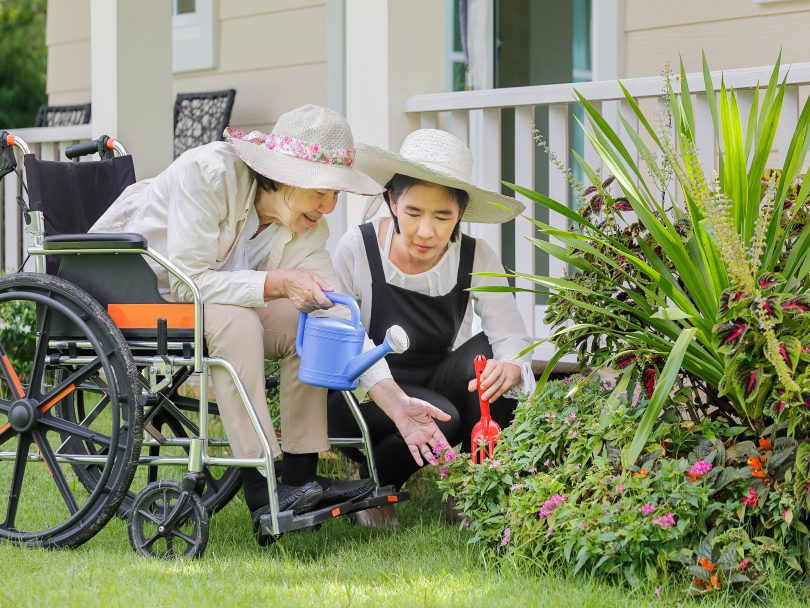By Vicki Spencer, Master Gardener
Adaptive sports, which originated as a means of rehabilitating war veterans with permanent injuries, expanded over the past century to include people of all ages and abilities. Today, the development of specialized recreational equipment allows thousands to participate in activities ranging from basketball to skiing and rock climbing. I personally discovered the benefits of adaptive techniques after my physical therapist suggested the STARS program in Steamboat Springs. My snowboarding experience was so exhilarating I began to think about applying adaptive techniques to my other passion: gardening.
Our bodies change throughout life and we are presented with challenges requiring us to change how we do things. If you have difficulty stooping, kneeling, sitting or maintaining balance on uneven ground; if you need to reduce joint stress; or if you need to rely on a wheelchair or walker for mobility, you don’t need to abandon activities you enjoy.
After acknowledging limitations, there are ways to work around them. It took me awhile to learn this lesson, but fortunately I have a physical therapist who does not accept failure. Each time I complained about limitations, she suggested solutions. When I could not prepare my garden bed, she said to ask for help or hire someone. This was hard as I’ve always been extremely independent. However, I found that I enjoyed companionship as friends and relatives dug weeds, turned soil and added compost. Removing pesky crabapple tree roots was going to take time, but it didn’t matter because I could only reach the garden edges from my walker. I only planted tomatoes, peppers and beets. Although modest in size, my garden was amazingly productive.
The next year, I considered building raised garden beds surrounded by wide, smooth paths to make maneuvering easier with a wheelchair or walker. I discovered a variety of raised bed designs, but particularly liked my sister’s waist-high beds constructed of stacked bricks. (The bed needs to be lower for wheelchair access.) The wide bricks are perfect for resting garden tools and it’s safe to lean against the sturdy walls. Beds should not be too deep so you can reach across them to plant, weed and harvest. Two to 3 feet works if you can only access from one side; double that if you can walk around the bed. You should also include an automatic drip system to make watering easier.
A variety of ergonomic garden tools are available to alleviate stress or arthritic pain in shoulders, wrists and hands. I carry my tools in a sturdy apron with multiple pockets, but you could wear farm overalls like my grandfather did. I also carry a small, plastic bucket with a handle for weeding and harvesting. It rests comfortably on a walker.
Adaptive techniques helped me garden again, but I lost track of time while enjoying myself and started having backaches. Again, my therapist had a solution. She said to pace myself, take frequent breaks and lengthen tight muscles by bending and stretching in the opposite direction. While I benefited from having a therapist as a coach, you can learn a lot about adaptive gardening on the internet.
Gardener Vicki Spencer has an eclectic background in conservation, water, natural resources and more.

